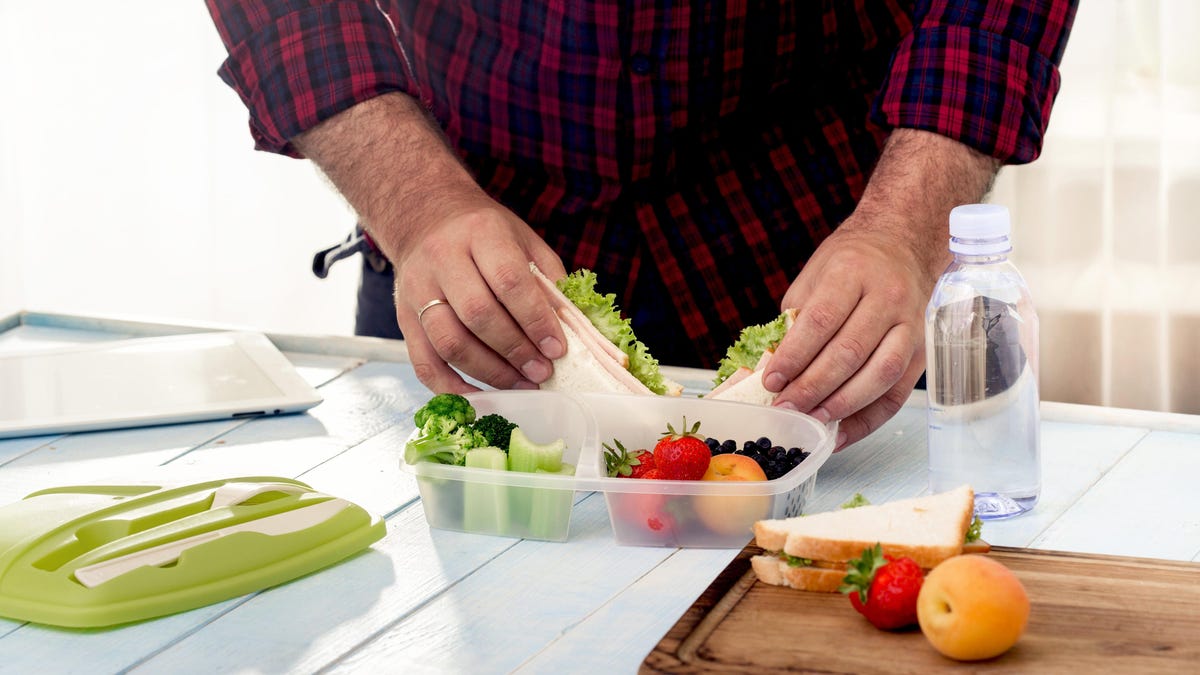The Best Ways to Pack Your School Lunch to Keep It Fresh

There are several hours between the time you pack your lunchbox in the morning and the time your child opens it in the dining room. Perishable food should not be in the “danger zone” for more than two hours, so you should pay attention to the time and temperature when packing food.
The “danger zone” is 40 to 140°F. In other words, perishable foods are safe when they are in the refrigerator (at temperatures below 40 degrees) or while they are cooking (boiling soup easily exceeds 140). But bacteria can multiply, potentially making food unsafe to eat, after a few hours at moderate temperatures . A lunch box in your school wardrobe would be a great example of this – depending on how you pack it.
Some products will last longer in the danger zone than others; for example, cheese is unlikely to kill you after a few hours out of the refrigerator, but it may not be very pleasant to look at or taste. If your child is a picky eater and their meals tend to come back half-eaten, this could be the reason.
What Foods Need an Ice Pack
Luckily, there’s an easy way to keep food cold: Use an insulated soft-sided lunch box, as recommended by the USDA, and include at least one cold pack. (Actually, the USDA recommends two—like a bag of gel and a bottle of frozen water.)
Insulated lunch boxes are really the best choice and luckily they are the most common type you will see for sale next to school supplies. Old-fashioned metal lunch boxes or even a classic brown paper bag won’t keep lunch cold for long. (You can still use them for shelf-stable foods, which we’ll mention below.)
Foods that should be kept cold, with an ice pack or frozen water bottle , include:
- Deli meats (and sandwiches with them)
- Fruit that has been cut
- Dairy products such as yogurt and milk
- Boiled vegetables
- Rice
- Most cooked meals (e.g. leftovers from dinner)
- Hard boiled eggs
- Canned or other durable foods that have been opened
You can even freeze some of these items. For example, frozen GoGurt can act as a cold compress and is usually soft enough to be eaten in the afternoon.
What to bring if you can’t keep food cold
While many foods need an ice pack to stay fresh, there are many foods that don’t. You can skip the ice pack for the things on this list:
- Whole fruits like apple or orange
- Raw vegetables such as carrots or chopped peppers
- Crackers, cookies, bread, muffins and other baked goods
- Peanut butter and jelly sandwiches (or equivalent nut butter or seed butter sandwiches)
- Bags or cans of tuna (sealed)
- Dried fruits such as raisins
- Nuts or travel mix
- Anything sold on unrefrigerated shelves that is still sealed (like fruit cups or applesauce bags).
- Juice cartons or ultra high temperature pasteurized milk that is still sealed in the container.
As a general rule, if you keep it in a cupboard at home, it doesn’t need an ice pack. If you usually keep it in the fridge, then yes.
How to safely pack hot foods
There is, of course, another way to keep food out of the danger zone: keep it hot. With a thermos or insulated food jar, you can keep soups or mac and cheese hot for hours.
While you are cooking hot food, fill an empty thermal container with boiling water. Then pour out the water just before filling the container with hot food. (I thought I invented this trick, but it turns out the USDA recommends it on their lunch box food safety page .)
If you are not sure if your food jar keeps the contents hot enough, do a test run and check the internal temperature after the jar has been sitting for a while. If the food remains heated to 140° for several hours, everything is in order. You have two more hours after the temperature starts to drop before it’s considered unsafe, so if the baby eats at noon, you need something that will keep the temperature above 140 until 10 or 11 am.